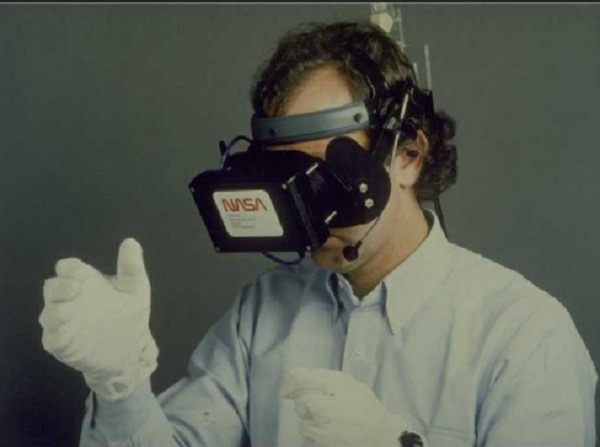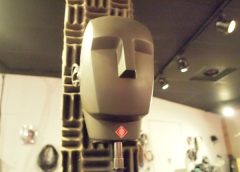
All the pieces of VR that we still use today were coming together nicely, but sound was still in stereo at best which meant it wasn’t matching the 3D world. But it wasn’t just interactive gloves that NASA’s Scott Fisher was familiar with, he also knew an awful lot about 3-D or binaural sound. Just as stereoscopic images produce a strong sense of depth when viewed correctly, binaural recordings generate the same sense of depth when using headphones (This was first recorded with the Neumann KU 100) This shouldn’t be confused with either stereo or quadraphonic sound, which are lesser attempts to achieve a binaural effect.
In a perfect 3-D sound system, you wouldn’t be able to distinguish between reality and the simulation if you closed your eyes and just listened to the sounds. When you listen to a stereo recording, the musical sources appear somewhere in a flat plane facing you. Listening to a 3-D recording allows the musical sources to appear anywhere in a sphere surrounding your head. In other words, sounds appear above your head, behind it, or in front of your nose.
Based on Elizabeth Wenzel’s work in the perceptual psychology of sound and the engineering talents of Scott Foster, president of Crystal River Engineering, Fisher contracted for the development of a system capable of creating 3-D sounds in the virtual world. Fisher wanted to attach sounds to virtual objects and have the sound follow the object if it moved.
Imagine you’ve just entered a virtual room. In the middle of the room, you can see a small radio that appears to be playing music. You go over and pick up the virtual radio with your gloved hand. Moving the radio around, you notice that the sound follows the location of the wire-frame radio, just as you would expect from a real radio. If this is done correctly, you should be able to close your eyes and pinpoint where the sound is coming from.
Wenzel and Foster were able to create such an effect. When the hardware was completed, it was capable of manipulating up to four sound sources at once-they called it a Aureal convolvotron. You could now have four different radios, each playing a different tune all at once. More importantly, instead of hearing all four tunes hopelessly fused together, you could distinguish each sound source if you focused your attention on each one. This is the same ability that allows us to distinguish different voices in a crowded room where everyone appears to be talking at once. NASA’s efforts resulted in the first computer-synthesized reality that combined computer-generated stereoscopic images, 3-D sound, voice recognition, voice synthesis, and a device for manipulating virtual objects.

By 1988, the VIVED project had become the VIEW project (Virtual Interface Environment Workstation). Robinett had left the project to ‘Set sail for foreign shores. Douglas Kerr had ported the original software to a new Hewlett-Packard 9000 that had sufficient computing power to draw virtual worlds with shaded surfaces instead of wire-frame outlines.
By the time Scott Fisher left NASA in 1990 to form Telepresence Research in Palo Alto, California with Brenda Laurel, the research had spread into other departments at NASA. There were ongoing projects to research telepresence and telerobotics, a virtual wind-tunnel project, and a virtual planetary exploration group. The initial seed planted by McGreevy, Fisher, and the pioneers before them had taken root and was beginning to spread. The commercialisation of virtual reality would not be far behind and it was going to be a bright firework that lasted a lot longer than most people realise.


